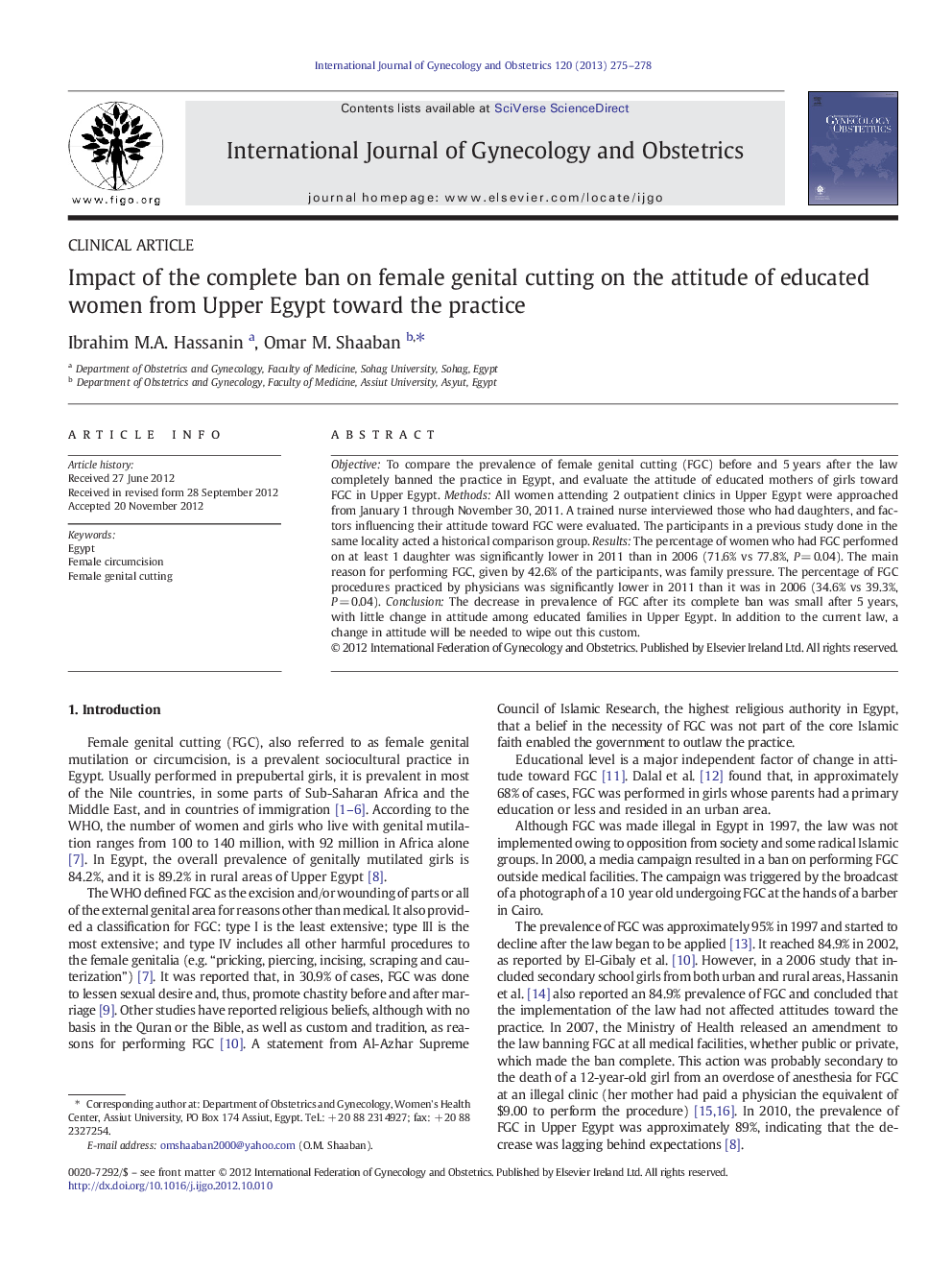| Article ID | Journal | Published Year | Pages | File Type |
|---|---|---|---|---|
| 3954316 | International Journal of Gynecology & Obstetrics | 2013 | 4 Pages |
ObjectiveTo compare the prevalence of female genital cutting (FGC) before and 5 years after the law completely banned the practice in Egypt, and evaluate the attitude of educated mothers of girls toward FGC in Upper Egypt.MethodsAll women attending 2 outpatient clinics in Upper Egypt were approached from January 1 through November 30, 2011. A trained nurse interviewed those who had daughters, and factors influencing their attitude toward FGC were evaluated. The participants in a previous study done in the same locality acted a historical comparison group.ResultsThe percentage of women who had FGC performed on at least 1 daughter was significantly lower in 2011 than in 2006 (71.6% vs 77.8%, P = 0.04). The main reason for performing FGC, given by 42.6% of the participants, was family pressure. The percentage of FGC procedures practiced by physicians was significantly lower in 2011 than it was in 2006 (34.6% vs 39.3%, P = 0.04).ConclusionThe decrease in prevalence of FGC after its complete ban was small after 5 years, with little change in attitude among educated families in Upper Egypt. In addition to the current law, a change in attitude will be needed to wipe out this custom.
